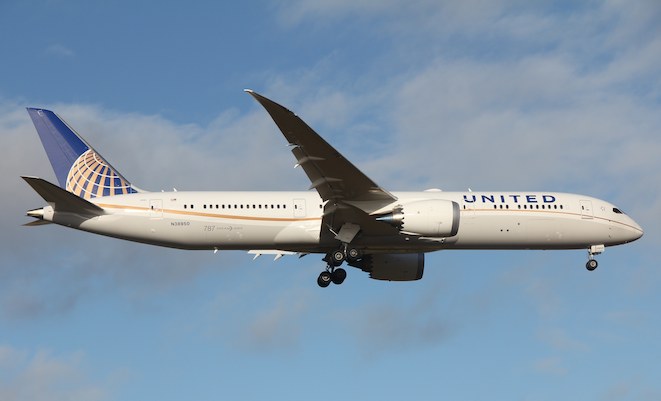United will look to build its Australian network through frequency and aircraft changes in the period ahead, a senior executive says.
The US-based carrier this week commenced direct flights between Melbourne and Los Angeles using Boeing 787-9 Dreamliner aircraft.
The new route, which will operate six days a week initially before going daily in March 2015, offered its Melbourne-based customers a non-stop option to the US, ending United’s previous practice of a tag flight to Sydney before the long trip across the Pacific.
It adds to United’s existing direct services from Sydney to Los Angeles and San Francisco, as well as a twice-weekly offering between Cairns and Guam.
United senior vice president of worldwide sales Dave Hilfman says Australia is a great market that continues to grow.
“We like the business aspect and the fact that Aussies are very enthusiastic travellers,” Hilfman said in an interview with Australian Aviation on Thursday.
“In Australia initially I think it is about frequency and gauge in evaluating how we can maximise our performance here.”
United’s entry on Melbourne-Los Angeles apparently prompted Virgin Australia to end its three flights a week on the route in favour of a daily offering from Brisbane.
Meanwhile, Qantas would soon have 10 flights a week from the Victorian capital to Los Angeles, up from seven currently.
While Hilfman said that while market conditions in Australia were good, United’s decision to swap its Boeing 747-400s to Sydney from Los Angeles and San Francisco to smaller 777-200s, had helped manage capacity.
That, in turn, had helped United’s revenue per available seat mile “and ultimately the profitability on the route”, he said.
“The fact that we have less seats means we are able to manage the mix of customers a little bit,” Hilfman said.
“You still have really significant demand, but you are able to manage your fares up which for us as a business is a good thing.”
Hilfman said the new Melbourne route, which lands in Los Angeles a little after 0600 local time, offered 37 one-stop connections to the rest of the US, including a late afternoon arrival into New York.
“That extensive network beyond makes all the difference in the world,” Hilfman said.
“We have an advantage frankly over Qantas and some others who are really good competitors and we know that.
“From a selling perspective it has been very popular and we are seeing that opportunity for people to connect to more places.”
Hilfman said there were no current plans to start service from Houston to Auckland, which was first mooted several years ago before being put on the backburner.
However, he said the route had a lot of promise and remained under consideration.
“We’d end up having to work with our Star partner Air New Zealand on that to make that work,” Hilfman said.
“There hasn’t been a lot of conversation lately about it but certainly it is on our radar.”
He paid tribute to Australian and New Zealand tourism bodies and airport operators, who had given the airline a lot of support working in partnership.
“They listen and they are responsive and you can’t say that about every government or tourism entity around the world,” Hilfman said.











